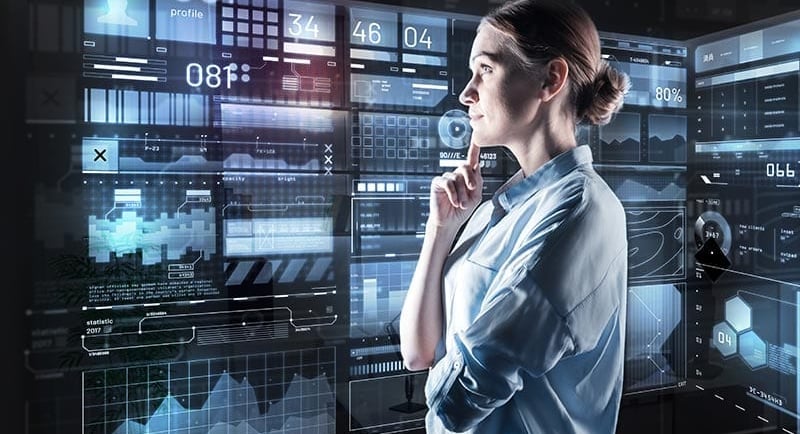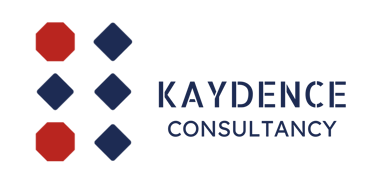Kaydence partners with the CSH to drive innovative solutions in education and healthcare.
The impact of artificial intelligence on job automation
Artificial Intelligence (AI) is transforming industries by automating tasks, improving efficiency, and reshaping the job market. This blog explores how AI-driven automation impacts various sectors, including manufacturing, healthcare, finance, retail, and transportation. While AI enhances productivity, it also raises concerns about job displacement, skill gaps, and ethical challenges. Learn about the industries most affected, the evolving nature of work, and how businesses and employees can adapt to the future of AI-driven automation.
RESEARCH
2/8/20252 min read


Artificial Intelligence (AI) is transforming industries worldwide, reshaping the job market by automating repetitive tasks and increasing efficiency. While AI-driven automation enhances productivity, it also raises concerns about job displacement and the evolving role of human workers. This blog explores how AI is impacting job automation, the sectors most affected, and the future of work in an AI-powered world.
How AI is Driving Job Automation
AI-powered automation is revolutionizing businesses by streamlining operations, reducing costs, and improving accuracy. Key areas where AI is automating jobs include:
Robotic Process Automation (RPA): Automating repetitive tasks such as data entry, payroll processing, and administrative functions.
Machine Learning & Predictive Analytics: AI algorithms analyze vast amounts of data to optimize decision-making in industries like finance, healthcare, and logistics.
Natural Language Processing (NLP): AI-powered chatbots and virtual assistants handle customer service queries, reducing the need for human support agents.
Computer Vision & Robotics: Automated manufacturing, self-driving vehicles, and smart surveillance systems are transforming sectors like transportation, security, and production.
Industries Most Affected by AI Automation
AI-driven job automation is impacting various industries at different levels. Some of the most affected sectors include:
1. Manufacturing & Industrial Automation
AI-powered robots perform assembly-line tasks with high precision, reducing reliance on manual labor.
Predictive maintenance minimizes machine downtime and optimizes production efficiency.
2. Retail & E-commerce
AI-driven recommendation engines personalize shopping experiences and increase sales.
Automated checkout systems and cashier-less stores reduce dependency on human cashiers.
3. Customer Service & Call Centers
Chatbots and virtual assistants handle basic customer queries, reducing the need for large customer service teams.
AI-driven sentiment analysis helps businesses improve customer interactions and engagement.
4. Healthcare & Diagnostics
AI-powered medical imaging and diagnostic tools assist doctors in detecting diseases with greater accuracy.
Robotic surgical systems enhance precision and reduce risks in complex procedures.
5. Finance & Banking
AI-driven fraud detection systems analyze transactions in real-time to prevent financial crimes.
Automated trading and robo-advisors assist investors in managing their portfolios efficiently.
6. Transportation & Logistics
Self-driving vehicles and drones revolutionize delivery services, reducing reliance on human drivers.
AI-powered route optimization enhances supply chain management and efficiency.
The Future of Work: Challenges & Opportunities
While AI-driven automation displaces certain jobs, it also creates new opportunities and transforms the nature of work. Some key considerations include:
Challenges
Job Displacement: Low-skilled jobs are at higher risk of being replaced by automation.
Skills Gap: Workers need to upskill and reskill to adapt to AI-driven job roles.
Ethical Concerns: AI decision-making raises concerns about bias, privacy, and accountability.
Opportunities
New Job Roles: AI creates demand for AI engineers, data analysts, cybersecurity experts, and automation specialists.
Enhanced Productivity: AI augments human capabilities, allowing employees to focus on strategic and creative tasks.
Business Innovation: AI-driven insights help businesses develop new products, services, and market strategies.
Conclusion
AI is undoubtedly reshaping the job landscape through automation, posing both challenges and opportunities. While some jobs may become obsolete, new roles will emerge, requiring workers to adapt and upskill. Businesses must find a balance between automation and human expertise to foster innovation and economic growth. The key to thriving in an AI-driven world lies in continuous learning, adaptability, and embracing technological advancements.
Kaydence Consultancy
Global platform for study abroad solutions, marketing strategy and your efficient research partner
Contact
Get in touch
director@kaydenceconsultancy.com
+9188916082
© 2025 Kaydence Consultancy. All rights reserved.
Designed with care | Powered by Innovation
Navigation
Company
Career
Legal
M G Road, Kochi, Kerala, India
